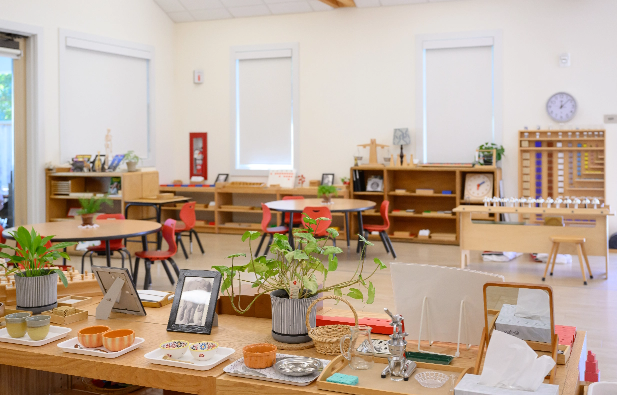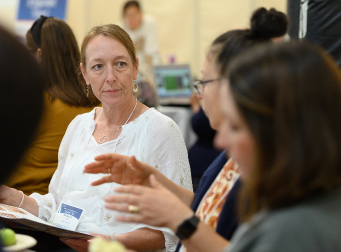
AMS School Accreditation
The American Montessori Society accreditation is the gold standard of Montessori school excellence. It’s the single best way to distinguish your school community and help implement and sustain rigorous standards for a quality, authentic Montessori education.
A Reputable and Rewarding Distinction
Provide an experience that meets and sustains rigorous standards of excellence.
Serve as a model for others in the Montessori community who aspire to reach the same level of excellence.
Experience deepened levels of commitment to the institution.
Confidently walk the path of ongoing self-evolution, professional development, improvement, and quality assurance.
Gain an internationally recognized credential that exemplifies the finest Montessori education.
Your Path to Accreditation
1. Application
Once you’ve determined that your school is eligible and ready to complete the accreditation process, you’ll submit an application for candidacy.
2. Application review and candidacy determination
AMS accreditation staff will review your application and contact you to discuss your status.
3. Self-study and report
AMS accreditation begins with an intensive self-study that involves the school’s entire community: staff, faculty, administration, parents, board members (if applicable), and sometimes students. During the self-study, the school examines and documents every aspect of its program and processes: governance, curriculum, fiscal and personnel policies, facilities, health and safety practices, teacher preparation, and learner outcomes. The school self-identifies areas of strength and opportunities for improvement. Once complete, a written report is submitted to AMS.
Many candidates for AMS school accreditation find that the self-study is one of the most valuable parts of the process. Not only is it a period of thoughtful examination, discovery, and enlightening mindset shifts, it helps reinforce shared values, aspirations, and commitments.
4. Onsite visit and report
At the end of the self-study period, the school hosts a team of peers from other AMS-accredited schools for an onsite visit. A major objective of the visit is to determine whether the school seeking accreditation is in compliance with AMS Standards & Criteria. The visit includes document review, observations, and interviews. After the visit, the team prepares a report for review by the AMS School Accreditation Commission and AMS Board of Directors.
The onsite visit offers an invaluable opportunity to get feedback and gain insight from leaders in the community. It’s usually a joyous affirmation of the things the school is doing well and a helpful guide for future improvements.
5. Review by the AMS School Accreditation Commission and the AMS Board of Directors
After completing all accreditation application steps, the AMS board of Directors will decide which schools are granted the distinction. Accreditation typically lasts for seven years.
The Cost
Along with school membership dues, schools seeking AMS accreditation (or reaccreditation) are responsible for:
- A school accreditation package: $140 (single or multisite)
- An application fee: $800 (plus $700 for each additional site)
- A fee for review of the self-study: $250
- Reimbursement costs of hosting the onside visiting team (travel, meals, and lodging). This cost varies widely depending on the size of the program. We typically send 1 team member for every 50 students enrolled in a school with at least 2 team members on every team.
- An annual report fee: $280 (due once per year with membership dues after achieving accreditation). Note: AMS-accredited schools receive up to 20% off their annual membership dues, which typically more than offsets the annual report fee.
- Many schools amortize the fees associated with the accreditation process over the 7 years that the accreditation remains in effect.
The Benefits of Cooperative Accreditation
The cooperative accreditation process allows a school to obtain 2 valuable accreditations in one seamless process. Co-accredited schools uphold both Montessori-specific standards and standards that apply to non-Montessori schools. Participating in a co-accreditation means you’ll complete 1 self-study and host 1 onsite visit (see details above) with representatives from both associations.
AMS partners with more than 20 other national and regional accrediting associations.
See the full list in the AMS Accreditation Information Packet.
Inquire about recognition in your state, which may include:
- Access to exclusive state funding sources such as vouchers, Education Savings Account (ESA) funds, or QRIS grants for materials or professional development
- Exemption from state child-care licensing requirements
- Recognition at the highest level of the Quality Rating and Improvement System
(QRIS), a systemic approach to assessing, improving, and communicating the level
Connect with us.
@americanmontessori


